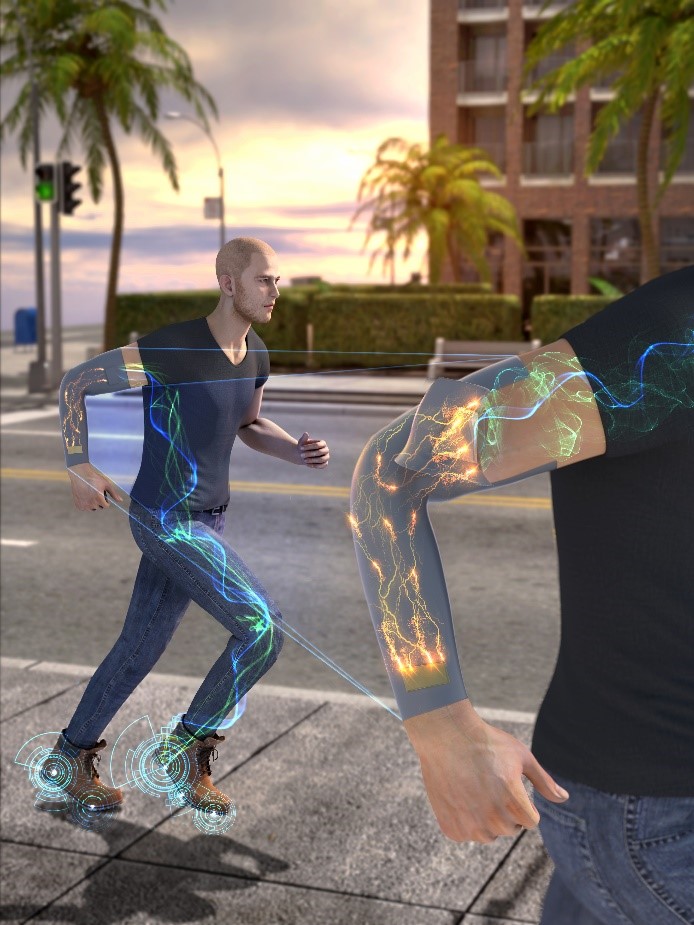New fabric uses the body’s energy to vitalize cells and promote wound healing
Scientists from Korea have developed a self-powered wearable device and fabric for targeted electrical stimulation of the body
Research published online in Nano Energy in May 2021

The new body-mediated energy loss conversion (BELC) system can be easily incorporated into everyday clothing to provide targeted electrical stimulation and thus vitalize cells and promote therapeutic benefits like wound healing.
Photo courtesy: Jinkee Hong from Yonsei University
Electrical stimulation of the body has known benefits for wound healing, strength training, and physical rehabilitation. But current wearable devices for electrical stimulation are bulky, uncomfortable, and cumbersome because of their batteries and wires, as well as the need to keep them regularly charged. Now, researchers from Korea led by Professor Jinkee Hong from Yonsei University, have developed a wearable device that is powered by energy lost from the body during regular physical activity. Presented in Nano Energy, the new body-mediated energy loss conversion (BELC) system has the potential to revolutionize wearable technology. “Our device can apply electrical stimulation to the desired area of the body even during activities like typing on a laptop or walking,” explains Professor Hong. The relative flexibility of the system could imply future applications for persons who are bed-fast or who otherwise have low mobility.
Electric charges are constantly being transferred between the human body and materials in its surroundings including clothes, shoes, ground, etc., through contact, separation, or rubbing of the two materials. This generates a small electric field throughout the body. The BELC concentrates this electric field onto a target area by means of an attached electrode to the target area and a free electrode.
The research team designed the BELC system such that it can be made into a patch, arm-sleeves, or other athleisure products and thus incorporated into daily wear. They then tested the benefits of the BELC fabric for practical application.
The researchers found that the BELC system could vitalize cells, improve their metabolic activity, and stimulate mitochondrial and cell membranes. They further tested the BELC system on mice models to demonstrate the safety and effectiveness of the device and found that the BELC system promoted wound healing in mice without any adverse effects like blood toxicity or organ damage.
The key difference between the BELC system and other types of electrical stimulation is that it does not apply a current to the body, but instead uses only an electric field to stimulate results. This attests to its safety in addition to its efficacy. As Professor Hong explains, “Our research group believes that the BELC system has enormous potential because its working is not bound by the performance of specific activities. People of all ages can use it in their daily lives, for everything from wound therapy to improving knee cartilage or stimulating the scalp.”
The BELC system can provide on-demand, personalized electrical body stimulation through BELC-fabric clothing, enabling a convenient, lightweight, non-intrusive, and power-saving means for cellular vitalization and therapy in everyday life.
Recommended Articles
Professor Jong-Hyun Ahn
Novel technique for producing high-resolution micro-LED displays
Professor Seong Chan Jun
Professor Donghyun Kim
Array of hope: Up close and personal with mitochondria in neurons